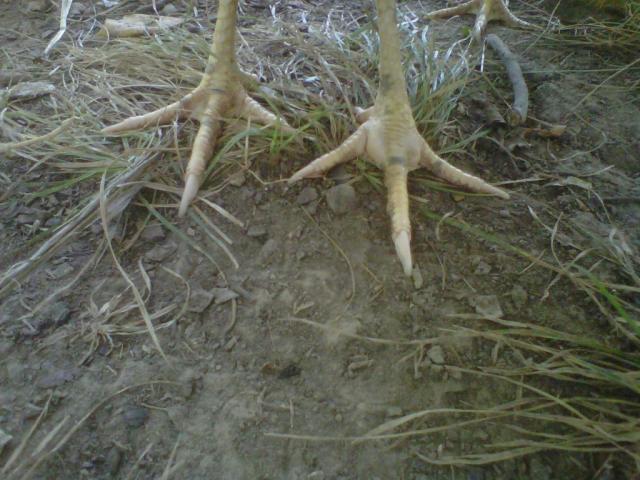ok, here I go... I live in Michigan where we have had TONS of snow and bitter cold lately. I am transitioning 5 chicks to the outside. They are Faverolles to boot! The standard Cockerill, I moved from the cage in the barn with a light to the show coop. I found him yesterday standing in the water dish. I picked him up, flipped him over and YUCK! His feet were swollen, red, and had HUGE blistery bubbles on his feet! They were NOT this way when I put him in here. Since he was wet from sitting in the heated water bowl, I wrapped him in a towel and ran him in the house. I put him in a clean guinea pig cage with no wire flooring, just sawdust with the powdered antibiotics I have to put in the water. I went in the basement this morning only to be about knocked over by the putrid smell! The blisters had all popped, he now has raw skin/flesh between his toes and on the pads of his feet. I made a batch of epson salt water, soaked and cleaned what I could for about 10 minutes, then wrapped him in an old towel while I cleaned (nearly gaggin) the cage. I put one of those blue pad things on the bottom and covered that with paper towel, put him back in there with chick food and medicated water. He has seemed to perk up and is hobbling between food and water dishes. I am checking my other Faverolles 2x a day and so far no one is showing any signs of it. (THANK GOD) Anyone had any luck with Vetrocyn? I am thinking I will try the sugardine solution if he makes it through the night and try soaking again tonight along with wrapping.
Just so you know, I have since rinsed out, bleached and rinsed again the water bowl to make sure the staph doesn't transfer to my breeders. Should I medicate them all just in case? Dang it! my 1st place show bantam roo is in there! Pray for me that I caught it in time!
Just so you know, I have since rinsed out, bleached and rinsed again the water bowl to make sure the staph doesn't transfer to my breeders. Should I medicate them all just in case? Dang it! my 1st place show bantam roo is in there! Pray for me that I caught it in time!




